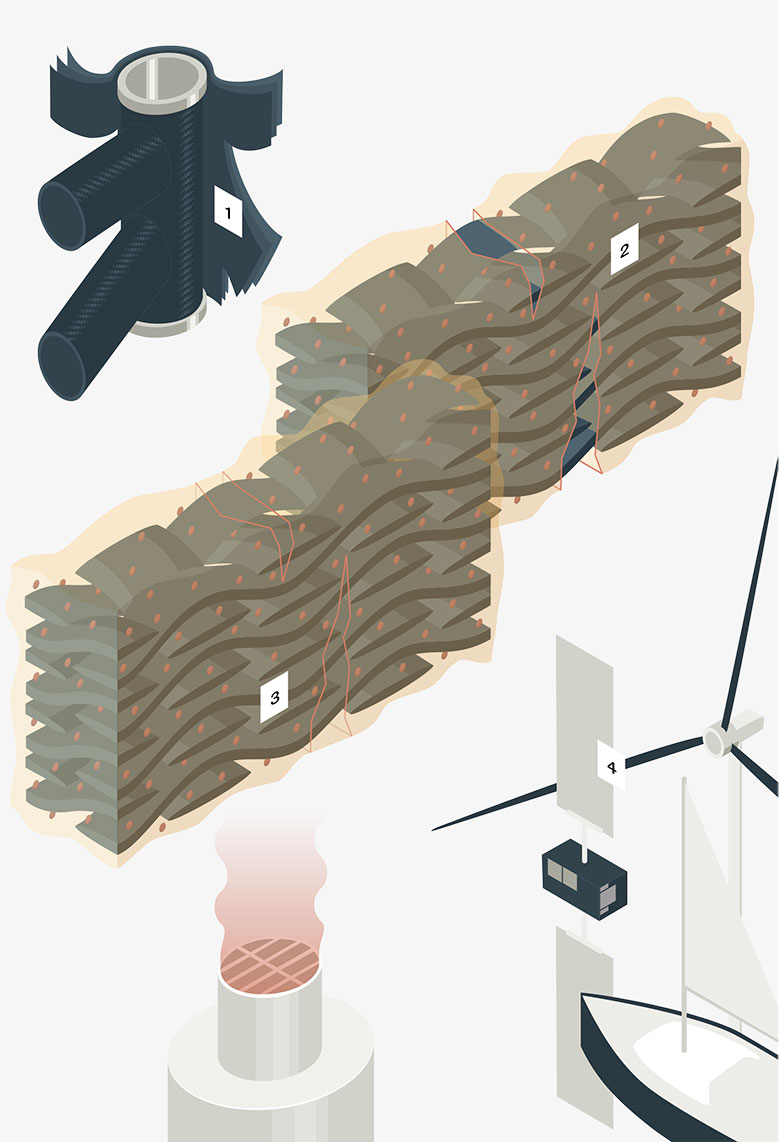
Illustration: ikonaut
4 — The application: on-the-spot repairs
This repairing capability could save time when pieces are difficult to disassemble. Such as the blades of wind turbines, which can be up 80 metres long and situated 150 metres above the ground. On-the-spot repairs can also be useful for satellites that have to run autonomously in space. And the properties of the material make it less porous after it emerges from its production oven – which is a useful characteristic for the hull of a ship, for example.
3 — The solution: healing with heat
CompPair has developed new chemicals for the resin that include a special healing agent (red dots). This modifies the properties of the resin so that when a heat gun at 150 degrees Celsius is pointed at the crack for one minute, the material flows into the crack and hardens again, restoring its original properties.
2 — The problem: expanding cracks
Nevertheless, cracks do occur in the hardened resin. If nothing is done about them, they can expand, weaken the material, and shorten its lifespan. To overcome this problem, CompPair – an EPFL spin-off – has developed a special resin with the ability to heal itself (see the yellow block).
1 — The material: combined properties
The frame of a carbon bike is made of a composite material. Elastic textiles from black carbon fibres are embedded in a hard resin to make a light, robust material that unites the respective advantages of both components. It’s exactly what you need when cycling up steep, bumpy slopes.